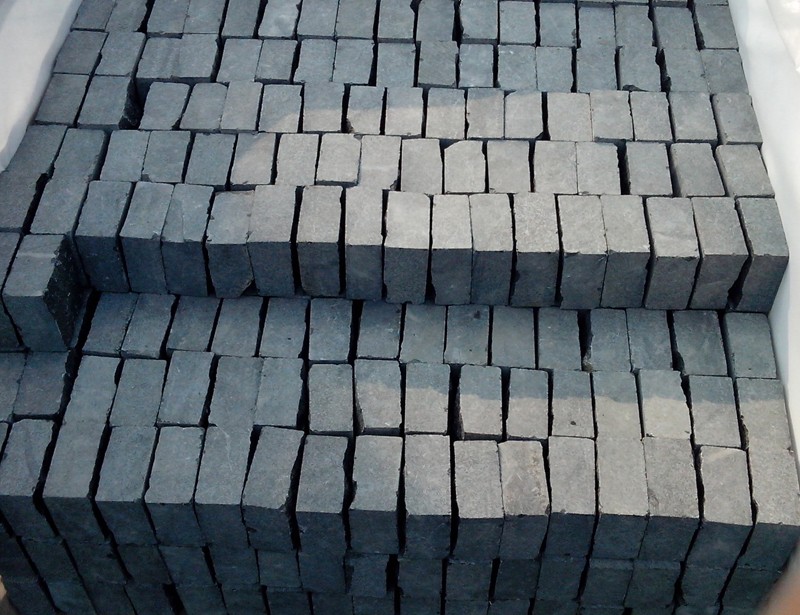Basalt Stone as a Building Material

Basalt stone is a commonly used building material in construction projects, particularly for the creation of slabs, tiles, and bricks. Its durability and strength make it an ideal choice for use in various building applications. Basalt stone is frequently used in the construction of buildings, blocks, and groundwork. The crushed form of basalt is also used in the creation of concrete aggregate, asphalt pavement aggregate, and filter stone in drain fields. One of the most significant advantages of using basalt stone in construction is its high durability. This makes it an ideal material for use in busy areas, such as flooring and countertops.
Basalt stone has several advantages when used as a building material. In addition to its durability, basalt stone is also resistant to weathering and erosion. This makes it an ideal choice for use in outdoor applications, such as garden paving and pool coping. Basalt stone is also known for its insulating properties, making it a popular choice for use in insulation projects. The unique properties of basalt stone are utilized in the production of modern, environmentally friendly construction products.
Basalt stone is frequently used in architecture, particularly for its decorative features. Its strength and durability make it an ideal choice for use in the creation of statues and other decorative elements. Basalt stone is also used in the creation of cladding and building veneers, stone facades, and paving stones. Examples of basalt stone in architecture can be seen in structures such as the Giant’s Causeway in Northern Ireland and the Palisades in New York. The versatility and durability of basalt stone make it a valuable resource in the construction industry.
Basalt Stone in Landscaping and Decorative Applications
Basalt stone is a popular choice in landscaping projects due to its durability and resistance to freeze. It is commonly used in garden walkways, retaining walls, and ornamental elements. The stone’s natural texture and color make it an attractive option for outdoor spaces. Basalt can also be used in paving tiles and dimensional stones, making it suitable for cladding and building veneers, pool coping, stone facades, paving stones, slabs, and floor tiles. Its versatility in landscaping applications makes it a preferred choice for both commercial and residential projects.
Basalt stone is also widely used in decorative applications. Its dark color and fine texture make it an excellent material for creating elegant and modern designs in both indoor and outdoor spaces. Basalt stone can be used in various decorative applications, including: – Flooring – Countertops – Wall cladding – Fireplaces – Water features The stone’s durability and resistance to scratches and stains make it a practical choice for high-traffic areas, such as kitchens and bathrooms. Its natural beauty and unique characteristics make it a popular choice for designers and architects looking to create distinctive and eye-catching spaces.
Using basalt stone in landscaping and decorative applications offers several benefits. Basalt’s durability and resistance to freeze make it a long-lasting and low-maintenance option. Additionally, its natural texture and color provide a timeless and elegant look that can enhance the aesthetic appeal of any space. Basalt stone is also environmentally friendly and sustainable, making it a responsible choice for construction and design projects. Its versatility and adaptability to different applications make it a preferred choice for designers, architects, and homeowners looking to create unique and beautiful spaces.
Basalt Stone as a Natural Resource
Basalt stone is a natural resource that is widely used in various industrial applications. It is a dark-colored, fine-grained, igneous rock composed mainly of plagioclase and pyroxene minerals. Basalt is formed through the cooling and solidification of magma or lava and is one of the most common rocks in the world. The geologic formation of basalt stone is a significant factor in its extraction and processing.
Extraction and processing of basalt stone involve extruding and heating of these rocks to get various products. Basalt stones can be processed using different techniques such as hand-cleaving, sawing, and chopping. Hand-cleaved basalt is often used for irregularly-shaped wall bricks, paving stones, and creating a distinctive and time-worn aesthetic. Sawing and chopping are used to create more uniform shapes and sizes. Basalt rock can be used to make various products such as basalt rebars, basalt fabrics, chopped basalt fiber strands, continuous basalt filament, and more.
Basalt stone has a wide range of industrial applications due to its unique properties such as durability, strength, and resistance to wear and tear. It is commonly used for flooring, wall cladding, stair stone, and decorative stone. Basalt is also used for the construction of wear-resistant linings, pipes, and plates for the foundry, as well as hydraulic works. In addition, basalt is used for aggregates, road bases, stone architecture, monuments, foundations, and more. The versatility of basalt stone in various industrial applications makes it a valuable natural resource.






